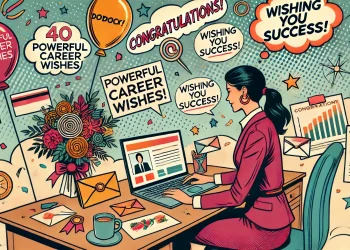No products in the cart.
Mastering the Art of Resume Writing in 2025
As job markets evolve, so must your resume. Discover the essential do’s and don’ts of resume writing in 2025 that can make or break your chances.
In a world where first impressions are often made digitally, the resume has morphed into a critical tool for job seekers in 2025. It’s no longer just a list of jobs and duties; it’s a marketing piece, a narrative of your professional journey. The stakes have never been higher, and the rules are changing.
The modern resume must be concise yet comprehensive, visually appealing yet professional. As companies sift through hundreds, if not thousands, of applications, the need for a standout resume is paramount. Let’s dive into the do’s and don’ts of crafting a resume that not only gets noticed but also resonates with employers.

Context: The Evolving Resume Landscape
The job market in 2025 is a labyrinth of opportunities and challenges, shaped by technological advancements and evolving employer expectations. Remote work, gig economies, and AI-driven recruitment tools are just a few of the factors influencing how resumes are crafted and assessed. In a survey conducted by CareerBuilder in early 2025, 70% of hiring managers reported that they spend less than a minute reviewing a resume before deciding whether to move forward with a candidate[1]. This stark statistic underscores the need for precision and impact in resume writing.
Moreover, with the rise of Applicant Tracking Systems (ATS), resumes must be tailored not just for human eyes but also for algorithms. Keywords related to specific roles have become the currency of the modern job application. A resume that fails to incorporate these keywords may never make it to a hiring manager’s desk. In this digital age, understanding the dual audience of your resume—both people and machines—is essential.
Remote work, gig economies, and AI-driven recruitment tools are just a few of the factors influencing how resumes are crafted and assessed.
The good news? There are clear strategies to enhance your resume’s effectiveness. Here are the do’s and don’ts to keep in mind as you prepare to launch your career or pivot to new opportunities.
Do’s: Strategies for Success
- Be Concise: Aim for clarity. A one-page resume is ideal for early-career professionals, while seasoned veterans might extend to two pages, but never more. Every word counts.
- Highlight Achievements: Shift from listing responsibilities to showcasing achievements. Use metrics to quantify your success. Instead of saying, “managed a team,” say, “led a team of 10 to increase sales by 30% within six months.”
- Tailor for Each Job: Customize your resume for every position. Use keywords from the job description to pass through ATS filters and catch the hiring manager’s eye.
- Utilize Clean Design: A clean, organized layout is essential. Avoid clutter and excessive graphics that can distract from the content. Use white space effectively to guide the reader’s eye.
Don’ts: Pitfalls to Avoid
- Skip the Jargon: Overly technical language can alienate readers. Use clear, straightforward language that communicates your skills without overwhelming the reader.
- Don’t Include Irrelevant Information: Avoid adding personal details like age, marital status, or a photo unless specifically requested. Keep the focus on your professional qualifications.
- Avoid Long Paragraphs: Hiring managers skim resumes. Use bullet points and short sentences to make your experience easy to digest.
- Neglect Proofreading: Spelling and grammatical errors can send your resume straight to the rejection pile. Always proofread and consider having a friend review your resume for clarity and accuracy.
By adhering to these guidelines, candidates can create resumes that not only survive the initial screening processes but also captivate the attention of hiring managers.
Analysis: Perspectives on Modern Resume Writing
The conversation around resumes is not just about aesthetics and structure; it reflects broader trends in workplace culture and employer expectations. According to a report by LinkedIn, 80% of recruiters view a candidate’s resume as a reflection of their professionalism and attention to detail[2]. This means that beyond the content, the overall presentation plays a crucial role.
Moreover, the increasing prevalence of online portfolios and LinkedIn profiles has altered how resumes are perceived. Many employers now expect to see a cohesive online presence that complements the traditional resume. A well-designed portfolio can serve as an extension of your resume, showcasing projects and achievements in a more dynamic format.
Then there’s the emotional aspect. For many young professionals, crafting a resume can be a daunting task, often laden with anxiety and self-doubt. The pressure to present oneself perfectly can be overwhelming, leading to a sense of imposter syndrome. A 2025 study from Harvard Business Review found that 65% of job seekers reported feeling anxious about their resumes and personal branding[3]. This highlights the need for support systems, whether through career coaching, workshops, or peer feedback.
The conversation around resumes is not just about aesthetics and structure; it reflects broader trends in workplace culture and employer expectations.
As we look to the future, the landscape of resume writing will continue to evolve. Technology will play an increasingly pivotal role, with tools and platforms emerging that offer real-time feedback on resume effectiveness and ATS compatibility. AI-driven resume builders are already making their mark, promising to streamline the process and enhance personalization.
Moreover, as the gig economy continues to expand, the traditional resume might see a shift towards more fluid formats that combine skills, experiences, and project-based work, reflecting a more holistic view of a candidate’s capabilities.
In this dynamic environment, staying informed and adaptable will be key. As the world of work transforms, so too must the ways we present ourselves to potential employers.










